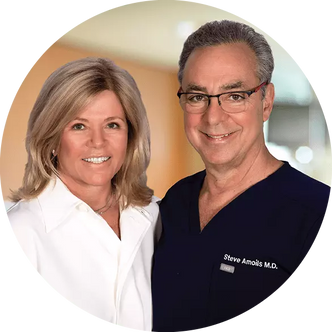For those dealing with chronic pain, it can be hard to carry out your daily tasks without having to stop and take a break. It’s normal to experience pain after an injury or an operation, but most people are able to recover with no lingering pain. Chronic pain is described as pain that lasts longer than 12 weeks despite treatment or medication. There are many solutions to treat pain without having to use highly addictive prescriptions and opioids. Here are some things to know about our non-opioid treatments:
Negative Effects of Opioids and Steroids
Before we look at some of the alternative treatments for chronic pain, you may be wondering what the problem is with opioid and steroid treatment. In some cases, patients are able to use these methods with little to no complications, but unfortunately, there are other situations where people are worse off after treatment than before. Here are some of the negative effects of opioids:
Worsening Pain
Opioids and steroids are commonly used to treat chronic pain. One issue that can arise in some people is that the medication can actually cause the pain to become worse. Obviously, this is not true in all cases but it is not the desired outcome either. Pain in patients can cause them to not be able to complete daily goals, and it can leave them feeling even worse than they were before.
Other Common Side Effects
Whenever you talk about medications, there are always possible side effects. However, the risk of side effects when taking opioids is much greater. Some of these side effects can include nausea, vomiting, constipation, dizziness, dry mouth, and sedation. Studies have shown that somewhere between 50 and 80 percent of individuals using opioids for pain treatment experience at least one side effect. While some side effects can be minor, some may also become worse over time.
Addiction Risk
In the United States and other places around the world, opioid addiction has become one of the biggest issues and a leading cause of death. When it comes to chronic pain, doctors can prescribe very strong pain medications to help ease the discomfort that patients are experiencing. The problem is that these medications are also highly addictive.
Other Treatments for Chronic Pain
With the risks of side effects and addiction associated with opioids, many people are looking for other solutions to treat pain and other medical conditions. Luckily, there are plenty of other treatments available. In today’s world, regenerative medicine is an amazing solution for those dealing with pain.
At AIM for Wellbeing, we offer many treatment options that you will find to be beneficial. Shockwave therapy is a non-invasive treatment that involves the delivery of shock waves to injured soft tissue to reduce pain and promote healing. Another option is prolotherapy, which is a form of regenerative therapy that uses injections around joints to strengthen ligaments and tendons after injury or overuse. Finally, a platelet-rich plasma (PRP) injection is an orthopedic therapy that uses a patient’s platelets to accelerate the healing of damaged joints, ligaments, tendons, or muscles. All of these treatments can not only help with pain, but they promote healthy and natural healing. We have many other treatments such as medical acupuncture, Rolfing, chiropractic rehabilitation and medical massage that offer a more conservative approach to managing pain.
Are you interested in learning more about chronic pain and possible treatment solutions? Check out our full list of focus areas and treatment plans to see how we can help you through our use of a comprehensive regenerative pain program.




